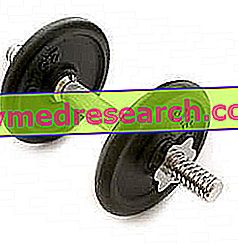By Dr. Antonio Parolisi
Fasting is a physiological condition of the animal body (including man), which triggers a series of mechanisms that put biological systems in a position to generate energy from bodily storage sources.
What is extremely fascinating is the animal's extraordinary ability to "empty and fill" in a natural and physiological way.

Whenever we demand an empirical answer to the many questions that are asked about the human body, from physiology to nutritional strategies, from biological rhythms to correct biomechanics, we should see how animal behavior in its wild habitat behaves.
Logically, any life form is mobilized to procure food when it is hungry! So when you feel the need to eat. Hunger brings the wolf out of the woods ...
This leads us to reflect on one point: do I move to feed myself or food to move ?
As usual, the concept of naturalness goes against what is the normal lifestyle of the modern animal-man.
The biological rhythms that characterize living beings are codified for a very evident reason: the conservation of the species.
How can we combine these concepts with the panorama of modern fitness? Simply re-proposing those rhythms that mother nature tells us and that each of us, in an innate and genetic way, tolerates and indulges in all tranquility and coherence with nature.
The " Vacuum Training " can be considered a form of training that makes the systems of continuous exchange of energies work, which our body puts into place by its nature. This training system uses the concept of movement and physical activity as a means of procuring the nutrients necessary for tissue survival and anabolism, just like all animals that live in the wild, inserted in a context of natural rhythms not distorted by "modern confusion".
We try to understand how this approach to fitness training works, which aims to modulate body composition, increasing muscle mass and reducing body fat. We also understand the contraindications in certain activities and why it is not recommended to apply these concepts to them.
Vacuum training includes alattacid and partially lactic acid anaerobic activity in the morning, on an empty stomach, without any form of high-intensity aerobic work, but forms of low-intensity aerobic activity and in any case for short times.
What happens to our body in the morning after night rest? If we consider that on average a dinner, understood as the last meal of the day, is consumed between 19.00 and 23.00 (on average), and that waking up occurs between 5.00 and 9.00 (always on average), we notice that our stomach remains fasting, therefore empty, for about 8-10 hours. During the night rest, the energy expenditure is considerably reduced compared to the day, but in any case the basal oxygen consumption remains such as to require nutrient deposits to sustain the nocturnal activity.
Everything is strictly dependent on the last meal of the evening and above all on its composition in carbohydrates, fats and proteins. This means that if I ate 200g of spaghetti, a grilled steak and walnuts at dinner, I will not have the same emptiness as when I eat grilled chicken with lettuce and olive oil.
If we consider that on average, in official nutrition, it is recommended not to overdo the sugars in the evening and to remain "light on average", that condition is created whereby, after about 2-3 hours from dinner, there is that famous food vacuum.
Organs such as the brain, heart, liver and lungs, and all body systems, use oxygen even when we sleep. In physiological rest conditions, the body takes its energy from a mixture of fats and carbohydrates. The lower the heart rate, the greater the percentage of fat consumption. It is estimated that on average, in basal conditions, an energy mixture is consumed given by about 50-70% of fats and 30-50% of carbohydrates.
If it is true that after a few hours from the last meal the body no longer has food to use, how is it sustained during night rest? As far as fat is concerned, there are no problems, since the available body quantity of this substrate is on average always in "abundance", while the point is placed on carbohydrates, or on the fact of drawing glucose for the cells. Here are the famous systems of which we spoke before, which are emptied and filled in a completely physiological way.
Our liver, a very important gland of the body, among its innumerable functions has the ability to retain the famous hepatic glycogen, to then make available carbohydrates when they are not introduced from the outside. During sleep, the glucose needed by the cells is obtained from glycogen, in a phenomenon known as glycogenolysis, thanks to a series of hormonal events that see a hormone as the main cause: glucagon.
In the morning, after the famous 6-10 hours of sleep, during which the body obtained glucose from the liver, glycogen stores are "low" (quantifying them is very difficult ...); there is therefore the need to "replace" them as soon as possible, because if the vacuum lasts for a sufficient time the production of glucose could reach considerably from the breakdown of the amino acids of the proteins, and this would mean "breaking down" the muscles to draw energy .
CONTINUE: second part »



